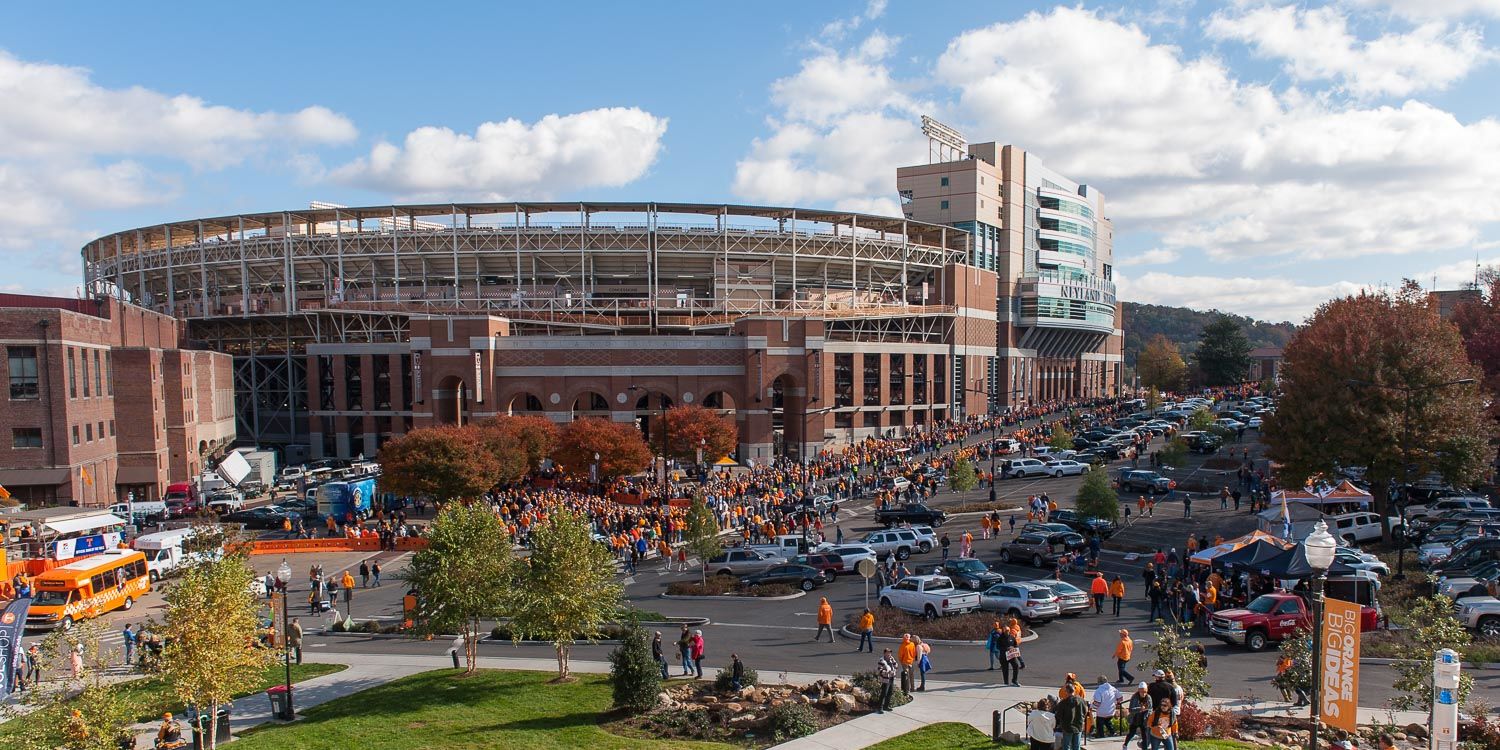So much of what happened last night was new. The question, which was never going to be answered last night, is how much of it will be better.
Josh Heupel’s offense snapped the ball 88 times. The last time we saw Tennessee play against Texas A&M last December, they snapped it 37 times.
The Vols averaged 66 plays per game in 2020. Jeremy Pruitt’s first team averaged 59.7, slowest in college football. You can watch all the film of UCF you want, but when it’s your team in your house, it’s just different. There is no PA announcer when the Vols are on offense, which I’m not sure is a choice or just a fact of playing that fast. As I’m sure Danny White already knows, I can’t text a buddy from my seats because the service is so bad inside Neyland. So sitting there last night, it was really weird to watch this thing come downfield at breakneck speed, with all the things so many of us have become accustomed to in watching a game completely unavailable between time and technology. There’s little opportunity to ponder the last play and consider the stakes of the next one. In-person, there’s even less chance to see where Tennessee’s rushing numbers are on the 12th play of the drive. It’s just constantly coming at you.
So too are the first impressions, where we’re also trying to filter out the noise this morning. Joe Milton launches the football. In warmups, he stood in the back of the end zone while the other quarterbacks stood at the goal line, and still routinely fired it into enemy territory across the 50 with what sure seemed like ease. But Tennessee ended the night with 61 rushing attempts and only 27 dropbacks, giving Bowling Green death by ground game. Milton was 10-of-22 for 100 yards before finally connecting on one of those deep balls to Cedric Tillman. He also had a ludicrous amount of time to throw on several snaps; nevermind Pittsburgh, I’m not sure Tennessee Tech will be that generous.
Meanwhile Tennessee’s defense allowed just 3.59 yards per play, the best performance against an FBS foe since the 2018 Kentucky game. Bowling Green had 32 rushing yards; this part is still new in the football world in general, considering Florida ran for only 19 yards last year in Knoxville but still won with ease. Still, a dominant, welcome performance by Tennessee’s defense.
And Tennessee’s 326 rushing yards were fun all around, with Jabari Small and Tiyon Evans getting 116 apiece, plus Joe Milton’s 44. The Vols had some runs you felt like got stuffed too easily against Bowling Green, though some of that was an injury to Cooper Mays. But they also popped 12 runs of 10+ yards.
It all reminds me a bit of a long car ride before we had all this new technology. When I was a kid, and you got tired of whatever cassette tapes you brought, you’d push a button or turn a knob on your radio dial and try to find something good in an unfamiliar place. Lots of static, some different options, just trying to lock in on a good signal. And it took a precise touch to get the best quality in the midst of all that noise.
Statistically, this game feels a lot like the UTEP contest from Jeremy Pruitt’s first year: the Vols won by less than you thought they should (24-0 in that case), but were thoroughly dominant both on the ground and defensively. Did that kind of performance mean much of anything for the rest of 2018? Not really, because UTEP went 1-11 that fall.
Will this one mean much of anything? Feels like the biggest question after one night is, “How much of that was Bowling Green?” And, of course, you don’t have to wait long for the answer. Pitt will get their own version against UMass on Saturday, and then the Vols and Panthers will get each other.
The Vols will still play fast. Joe Milton will still have that arm. Not sure those new lights will matter much at noon, but there will still be plenty of newness in the atmosphere.
But what kind of atmosphere will the Vols create for themselves next Saturday?

